Life at the cabin would not be the same without the majestic 100+ year-old white pines. As awesome as these soaring, scented, swaying beauties are, they do present one big problem – a non-stop tree sap attack on the cars below. This is how you remove it.

Tree Sap Car Removal - The Secret is Clay
I tried traditional car washes and hand washing, but neither did much to remove the dried-on hard pine sap that stuck to our cars. After a bit of research, I found that a simple two step process worked best for me to remove the sap from the car finish.
The two step combo for tree sap removal from car finish was denatured alcohol and automotive detailing clay. The alcohol removed the bulk of the sap and the detailing clay cleaned up the inevitable haze that the alcohol sap mixture left behind.
I found that the two step approach was much better than either step by itself. If I used just the solvent (denatured alcohol), the diluted, liquefied sap and alcohol mixture left a nasty, sticky haze that was hard to remove.
If I used just the detailing clay, it took too long to remove large, hard dried deposits, and each deposit used too much of the clay. The answer; use both.
Automotive Detailing Clay, Say What???
If, like me, you had never before heard of Detailing Clay here is a quick description of what it is: Automotive detailing clay is a putty-like compound embedded with very fine abrasives used to clean car finishes. Detailing clay or clay bars are used in the automotive industry to remove fine contaminant from car finishes.
Detailing clay does an excellent job removing contaminants from car finishes and for this project was the perfect solution to remove the trace residue of tree sap left on the car finish after using alcohol.
OVERVIEW | Remove Tree Sap From Car
SUPPLIES LIST | Remove Tree Sap From Car
TOOLS LIST | Remove Tree Sap From Car
STEPS | Remove Tree Sap From Car
- Wash The Car.
Using car wash detergent or similar, hand wash car to remove dirt and contaminants. Use two buckets, one for wash and one for rinse, to keep wash soap water cleaner. Thoroughly rinse car after washing.
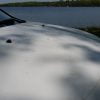


- Remove The Tree Sap With Denatured Alcohol on Microfiber Cloth.
Using denatured alcohol and a microfiber cloth, rub tree sap deposits to remove. Turn cloth frequently and re-soak with alcohol to reduce residual sap haze left on car finish. Continue removing deposits until all deposits are removed including those on the windshield and glass.
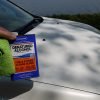
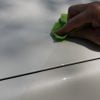
- Wash Away The Alcohol.
Using fresh soap and water, re-wash the car over the areas where the denatured alcohol was used to remove sap.

- Remove Tree Sap Haze with Automotive Detailing Clay.
Prepare detailing clay by kneading to form clay into a flat pad. Then, apply soapy water or clay bar lubricating solution prior to using clay on car finish. Once wet, rub clay pad back and forth across car finish using light pressure until surface feels smooth and no longer “catches” on paint surface.
I found it helpful to lightly spray water on the car as I used the clay bar. Rinse with clean water after using the clay bar. Continue using the clay bar to remove any sap removal haze on the car surface. The clay bar works well on most of the car finishes including and especially on the windshield, and any chrome or plastic trim.
Beware the detailing clay can damage surfaces if not used properly. Detailing clay traps dirt and other contaminants that stick to the clay surface. When using, refresh the clay surface by folding it over and kneading during use to keep clay surface clean.
Surfaces should be washed and “clean” prior to using detailing clay. Avoid using detailing clay on soiled surfaces. If you use a clay bar on wheels or similar surfaces, you should probably have a dedicated clay bar for those relatively “dirty” surfaces. If the clay falls onto the ground, remove and contaminants or discard clay to prevent damaging paint surfaces.
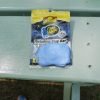

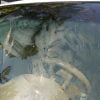
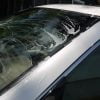
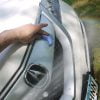
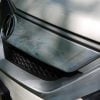
- Seal Car Surfaces with Sealant or Wax.
Restore car finish by re-applying wax or sealant. Follow the directions for the product you are using. I used a silicone based sealant, which can be whipped on, then buffed off once it dries to a slight haze. I used a microfiber cloth to apply and remove the sealant.
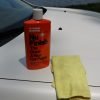





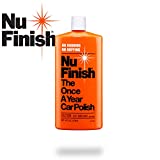
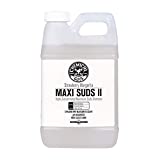
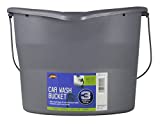
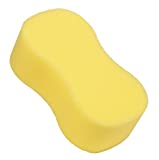
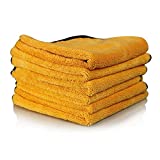
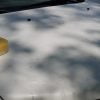
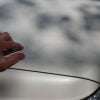


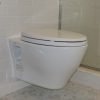
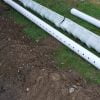
Thank you for sharing you’re knowledge, much appreciated, as have been seeking a way to get rid of tree sap that marked up my beauty, a 2006 Lincoln Town Car, black in black with tented windows in fantastic condition,with of course the tree sap.
Thank you again.
Thank you for sharing your knowledge.
I just purchased a beauty, 2006 Lincoln Town Car, black over black in black with tented windows in fantastic condition.
to my shergrim I noticed tree sap and have been seeking ways to rid it from my ride.
Will do as you suggest, looks I have finally found the right answer to my question, thank you again.
Interesting. Why denatured alcohol (ethanol)? I’ve been using rubbing alcohol. First I gently pop the sap off with my finger nails than use the alcohol to get up the last underlayer. I do all this right before the car wash!
Any advantage to one kind of alcohol over another? I’ll definitely look for the detailing clay.
Hey Jason,
Both Isopropyl alcohol and denatured alcohol (ethyl alcohol) will work and are generally accepted as safe (especially if diluted with water) on car finishes (they do removal waxes and sealant though).
Many suggest thinning isopropyl alcohol with water prior to using. Both can be mixed with water before use, reducing their solvent characteristic and potentially making them safer to use on finishes. Bottom line is both are probably safe with modern car finishes, and even safer if diluted with water.
G
CDIY